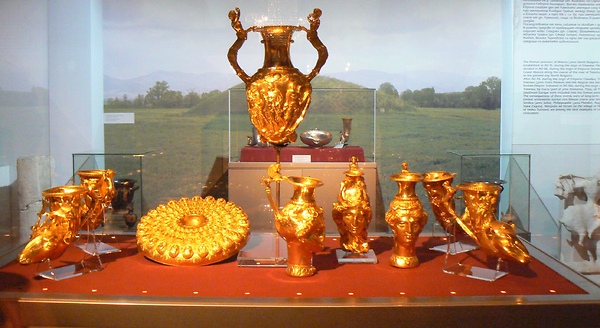Panagyurishte Treasure was found accidentally (as most treasures) in 1949. It is made of high quality gold and its weight is 6 kg and consists of 9 vessels (4 rhytons, 3 decanters, 1 vials and 1 amphora-rhyton). Each of the rhytons is decorated with an exquisite head of an animal (a deer or a re-goat). The vial was decorated with bulging Negro heads arranged in concentric circles. The most prominent vessel – the amphora-rhyton was decorated with scenes from Greek mythology and Homer’s Iliad. The most probable version for the treasure’s origin is that it was produced in Lampsak, a Hellenic colony on the southern Black Sea shore (in today’s Turkey) in the middle of 4th c. BC. We must presume that it was made on the order of some of the richest Thracian rulers. This treasure was used probably in rituals. Many of the drinking openings in most of the vessels remind of the sacred tradition of fraternization in which the simultaneous drinking from the same vessel connected the people drinking for the whole of their life. The importance of the treasure for the history of ancient culture in our lands is great. It reveals the diverse cultural and historical processes of influence between Thracians and the Hellenic culture. For this reason it has long acquired world recognition as one of the magnificent monuments in the world. Nowadays, the treasure is kept in the Archaeological Museum in Plovdiv.
|


